Beijing is the capital of China and the nation’s political, economic, and cultural hub. Most people travel to Beijing to experience its unique mix of ancient and modern attractions – the city is home to several UNESCO World Heritage Sites (Forbidden City, Temple of Heaven, etc), as well as modern architectural marvels such as the Beijing National Stadium and the CCTV Headquarters. Here we’ll cover the top 15 things to do in Beijing based on my recent trip to this bustling, sometimes overwhelmingly large city.

I spent three unforgettable days here exploring the city’s main sites on a recent business trip and I left wanting to see so much more. It’s pretty incredible to think that Beijing was the biggest city in the world for most of the 15th through 18th centuries. As of 2015, Beijing had a population of more than 18 million people! After Shanghai, it’s the second most populous city in China.
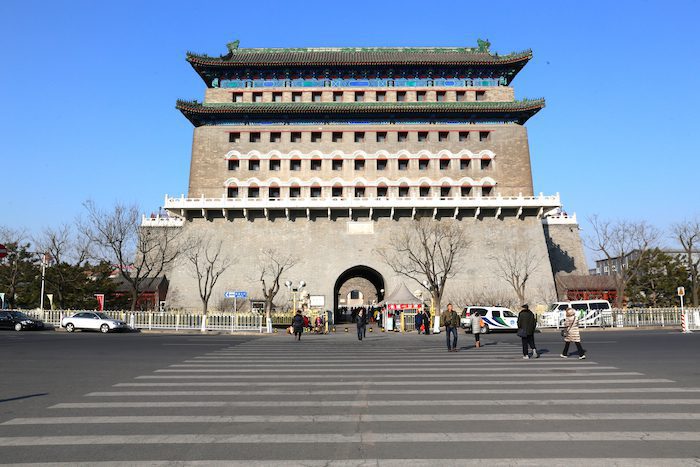
Its sheer size and number of attractions makes it worthy of a minimum of 3-4 days to properly explore its main sites. Here’s my list for 15 things to do in Beijing.

Would you go to Rome and not visit the Coliseum? Nope. So, how could you skip seeing one of the Seven Wonders of the World when in China? From Beijing you can visit several sections of the wall. I decided to visit the Mutianyu section because there are fewer crowds.
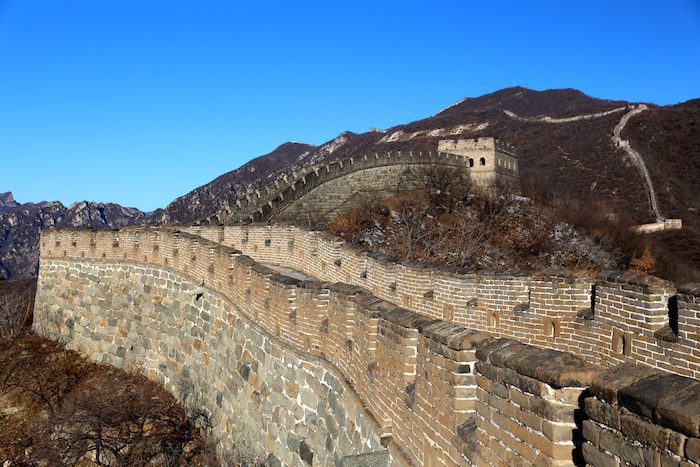
Located about 45 miles from Beijing, the Mutianyu section is about 1.4 miles long and relatively easy to climb (not too steep). The views are mostly of the surrounding mountains, which make for a nice break from the hustle and bustle of Beijing.

The Mutianyu section is the longest fully restored section of the Great Wall that is open to the public. It was originally built in the 6thcentury by the Northern Qi Dynasty then later reinforced under the Ming Dynasty in the 14th century.
The cost to enter is ¥40. There is a cable car to get you up and back down if you’re not feeling up to the one-hour climb to the wall.
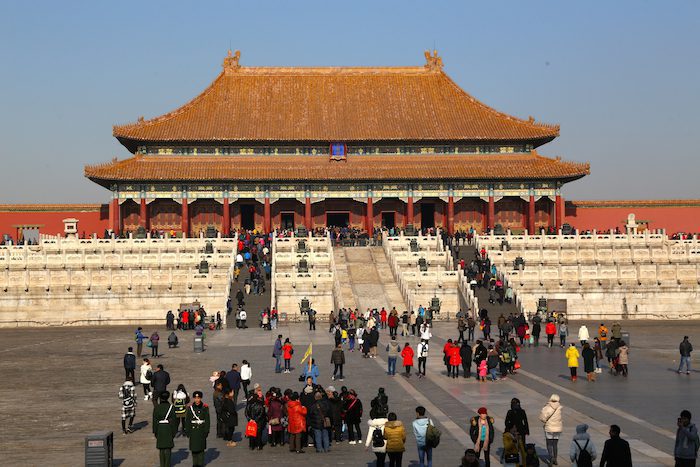
The Forbidden City (AKA Palace Museum) is a sprawling palace complex that was home to 24 Chinese emperors from 1420 to 1911. This amazing city-within-a-city took 14 years to build (1406 – 1420) and was deemed “forbidden” because special permission was needed to enter.

The Forbidden City is divided into the Outer Court and Inner Court. The Outer Court includes halls used for ceremonies, the Imperial Library, and halls used for daily meetings. The Inner Court was where the Emperor lived with his family. It also featured an Imperial Garden, Hall of Ancestry Worship, and other structures used by the Imperial family. In all, there are approximately 9,000 rooms in the Forbidden City.

Most visitors enter the Forbidden City through Meridian Gate from Tiananmen Square (see below). There are several points of interest in this 180-square-acre complex. Of these, the Hall of Supreme Harmony in the Outer Court is perhaps the most widely photographed of all. It is the largest hall within the city and is one of the largest wooden structures in China.

When you visit the Forbidden City remember to wear comfortable walking shoes! Opening hours are Tuesday through Sunday from 8:30 am to 4 pm. (closed Mondays). Get there in the morning to give yourself enough time to explore the complex. Entrance fees: 1 April – 31 October: ¥60; 1 November – 31 March: ¥40. You can rent an audio guide at the entrance for ¥40. There are several languages available.
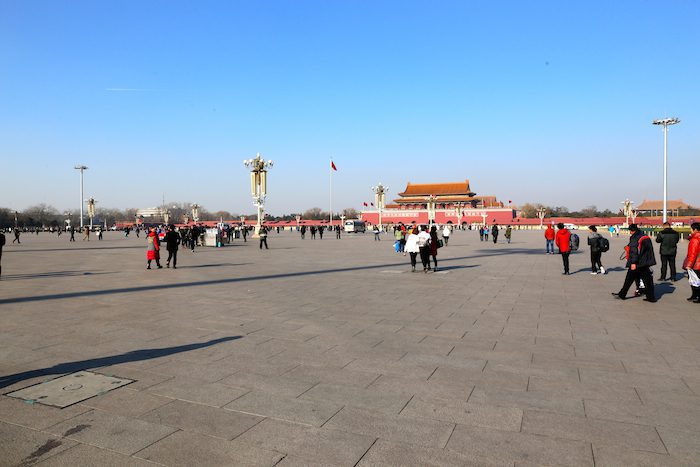
It would be impossible to come to Beijing and not see the largest square in central Beijing, Tiananmen Square. This massive square located at the midway point of Chang’an Avenue contains several national monuments. These include the Great Hall of the People, Monument to the People’s Heroes, the National Museum of China, and the Mao Zedong Memorial Hall.
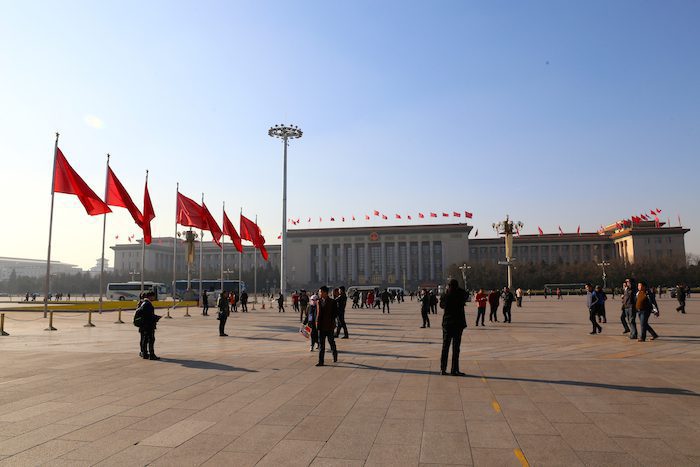
Over the years Tiananmen Square has been the site of a number of political events and protests, most notably the violent Tiananmen protests of 1989 that resulted in civilian casualties. Nowadays, the square is a peaceful and popular tourist attraction and national treasure, providing visitors the opportunity to learn about the development of modern China.
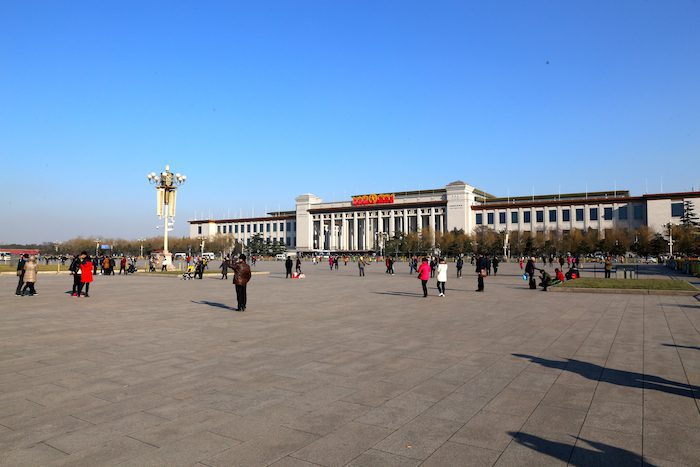
Tiananmen Square measures 109 sq. acres and was designed to hold 500,000 people. It is still used as a place for celebrating national holidays. Tiananmen Square is a public square that is free to enter.
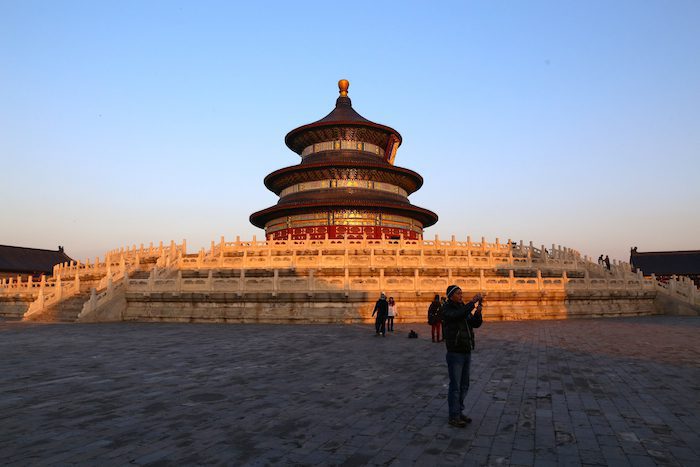
The Temple of Heaven, also known as Tiantan Park, dates back to 1420 (the same year that the Forbidden City was constructed). It was used by emperors of the Ming and Qing dynasties to offer sacrifices to the heavens and to pray for successful harvests. Declared a UNESCO World Heritage Site in 1998, Beijing’s Temple of Heaven is an architectural marvel of 15th century China.
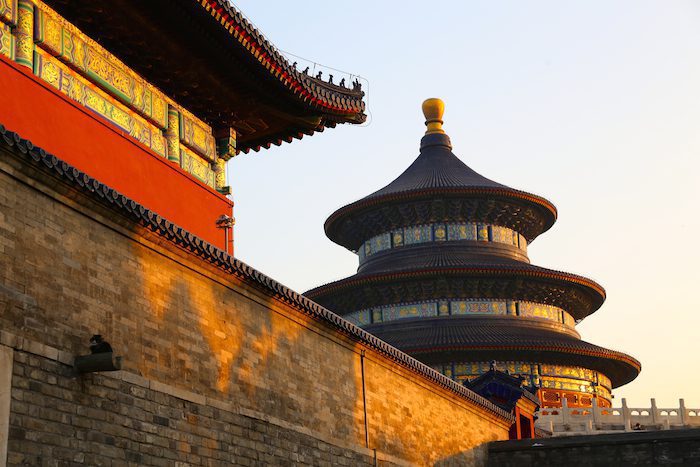
The concentric circular design of the altars represents the relationship between earthly and celestial realms. The Temple of Heaven complex also features gardens, stables for sacrificial animals, Abstinence Hall where the emperors would prepare themselves before the sacrifices, prayer halls, and several gates. The main sites to check out during your visit are: the Hall of Prater for Good Harvests, the Imperial Vault of Heaven, the Danbiqiao Bridge, the Circular Mound Altar, and the Cypress Grove – a garden of centuries-old cypress tress.
“It is the most complete existing imperial sacrificial building complex in China and the world’s largest existing building complex for offering sacrifice to heaven.” –UNESCO.org
The majestic Temple of Heaven is located south of the Forbidden City. Admission to the park is ¥10. Admission to the park and the three main buildings (“Through Ticket”) is ¥35.
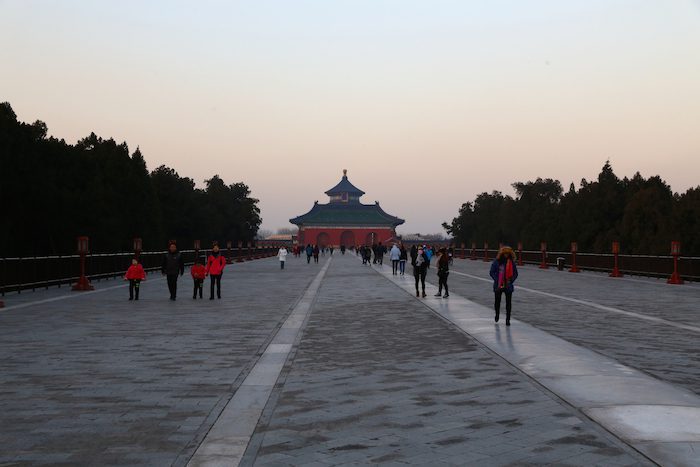
Suggested route: Enter through the South Gate, walk along the Danbiqiao walkway to the Circular Mound Altar, then to the Imperial Vault of Heaven, the Hall of Prayer for Good Harvests, the Long Corridor, and exit through the South Gate. If you cross Tiantan Road you’ll be at Hongqiao Market (Pearl Market). Here, you can buy cheap South China Pearls and browse the stalls of toys, clothing, and knickknacks. There is also fish market in the basement.
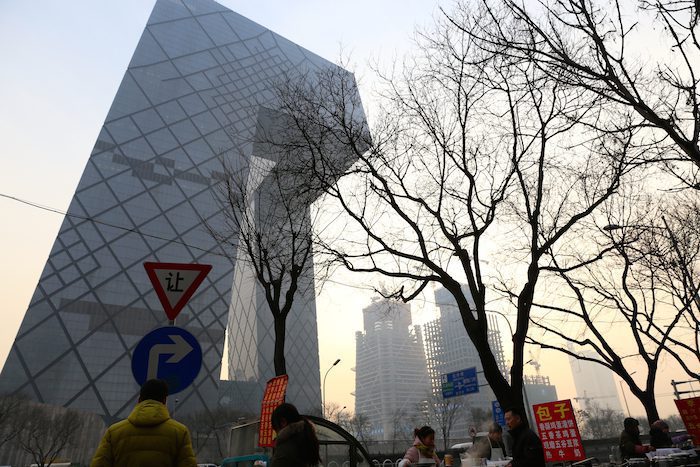
The China Central TV Headquarters Building (CCTV) is a 44-story skyscraper boasting a unique shape that has earned it the nickname, “big boxer shorts.” The building was designed by Dutch architect Rem Koolhas and complete in May 2012.
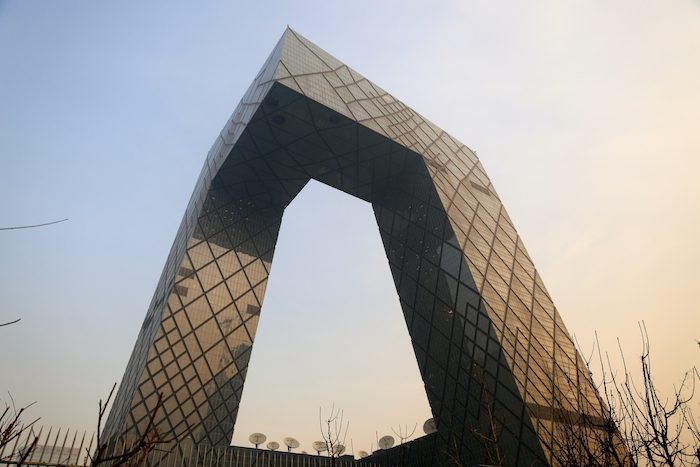
Its thought-provoking design joins the ranks of other Beijing buildings like the Beijing National Stadium (“Bird’s Nest”) and the National Centre for Performing Arts (“Giant Egg”).
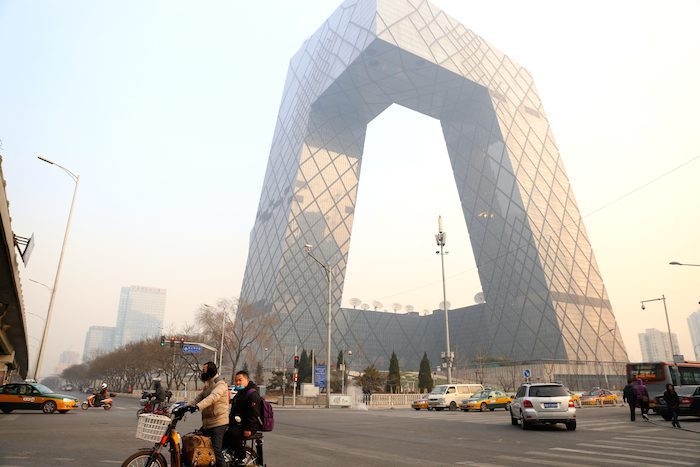
The CCTV building is considered to be one of the strangest buildings in China, which is why skyscraper and architect aficionados like me will probably want to photograph it. The closest Metro stop is Jintaixizhao station on Line 10.

What’s not to love about a restaurant that offers gorgeous city views, impeccable service, and a delicious menu featuring European, Middle Eastern, and North African flavors? Located along the historic Qianmen pedestrian street, Capital M Beijing is the perfect lunch spot if you’re in or around Tiananmen Square.
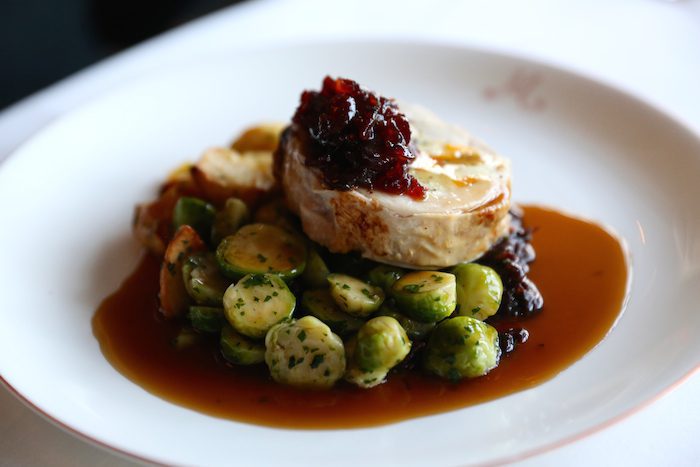
A short 20-minute walk south of the square will bring you to this gorgeous venue that’s known for its striking décor, extensive wine list, and large outdoor terrace with direct views of Zhengyangmen, the 15th century south gate to Beijing.
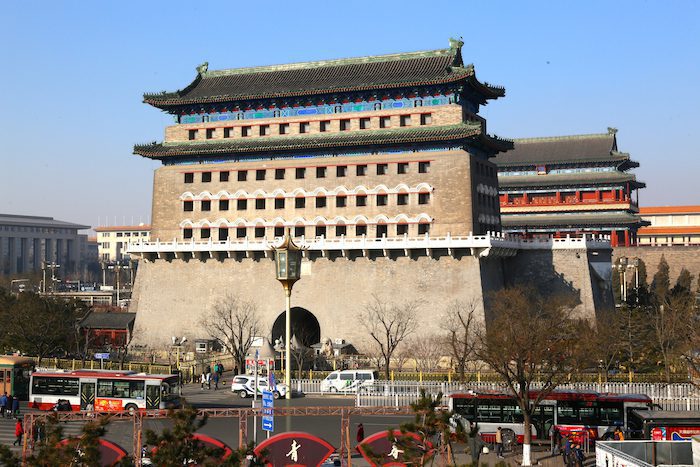
So what about the food? My culinary experience Capital M was fantastic! Unfortunately, it was too cold to dine outside, but my three-course lunch menu was totally worth it. The menu changes monthly to incorporate seasonal ingredients. One standout dish was the truffle polenta and M’s famous pavlova (fresh soft cheese made in Beijing served with local dried fruits and crisp lavash bread).
The three-course lunch menu will set you back ¥264. Reservations are a must!

The Ming Tombs sits about 30 miles northwest of Beijing, in a lush valley at the foot of the Tianshou Mountain. This is one of the most popular day trips from the capital – visitors flock here to see the palatial architecture of the Imperial Tombs of the Ming and Qing Dynasties. The site contains mausoleums of 13 Ming emperors, of which three are open to the public.
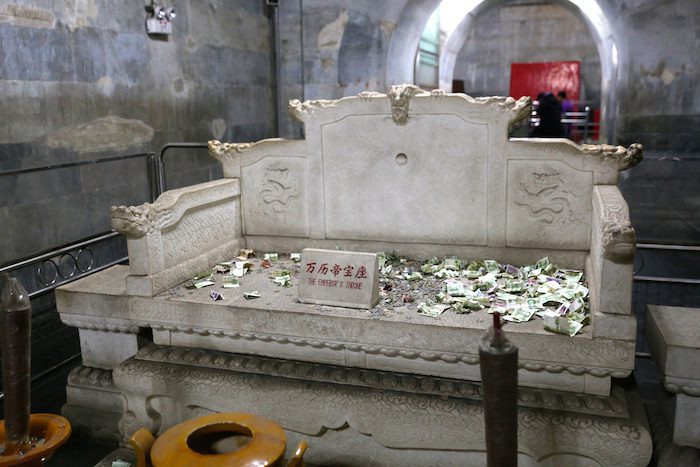
The tombs date back to the 14th through 20th centuries. As per UNESCO, the complex itself is a “masterpieces of human creative genius… the design reflects the idea of harmony between man and nature according to Fengshui principles.”

You need time at the Ming Tombs if you plan on seeing all three of the tombs, Changling, Dingling, and Zhaoling. I only visited Dingling, which is the mausoleum of the 13th emperor of the Ming Dynasty, Zhu Yijun (1563 – 1620), and his two empresses. Much of the tomb complex is an underground palace comprised of vaulted halls, each containing priceless imperial treasures and relics.
Whether you choose to visit one, two, or all three of the Ming Tombs, you shouldn’t miss the Sacred Way, a paved road lined with human and animal statues. Keep in mind that there is a separate admission fee to each of the tombs and the Sacred Way.

According to Tour-Beijing.com:
Entrance Fees:
Changling Tomb: ¥30 (November 1 – March 31); ¥45 (April 1 – October. 31) Dingling Tomb: ¥40 (November 1 – March 31); ¥60 (April 1 – October. 31) Zhaoling Tomb: ¥20 (November 1 – March 31); ¥30 (April 1 – Oct. 31). Sacred Way: ¥20/30.
Opening Hours:
Changling Tomb: 8:30 am – 5:30 pm Dingling Tomb: 8:30 am – 6 pm Zhaoling Tomb 8:30am – 5:30 pm. Sacred Way: 8:30am – 6pm. Tickets sales stop about half an hour before the site closes.

The Silk Market on Xiushui Street is a busy indoor market boasting over 1,500 retailers! This is a good place to purchase souvenirs, or just browse the endless stalls of bags, shoes, fabrics, accessories, and clothes.
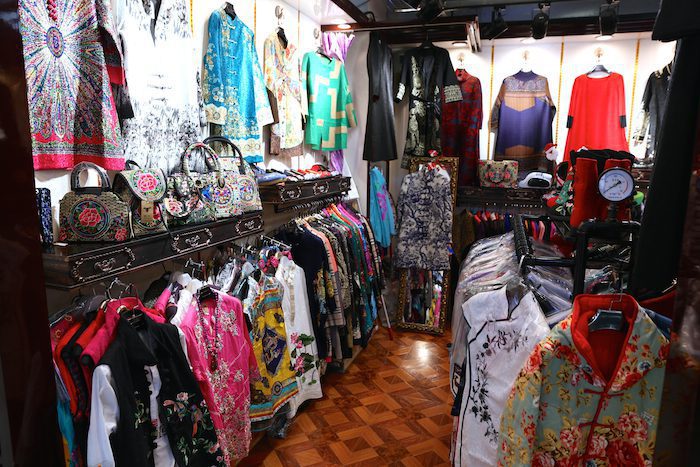
The Silk Market is full of knock-off goods, and the merchandise doesn’t differ much from store to store. There are some stores, however, with higher quality merchandise than others.
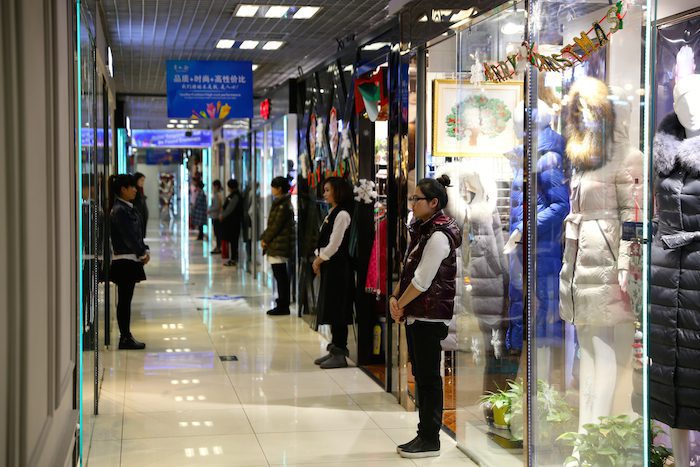
The trick to a successful shopping trip at the Silk Market is to know you have to bargain, and to feel confident enough to do it correctly. I came across this helpful article: How to Bargain in Beijing Silk Market which I feel helped me get a great deal on Chinese-style silk shirts for my wife and myself, plus a kimono for my baby daughter. The most important thing to remember is to keep your cool and be friendly, even if the vendors aren’t. If you’re looking to get a custom tailored suit, there are tailors available in the fabrics department on the third floor.
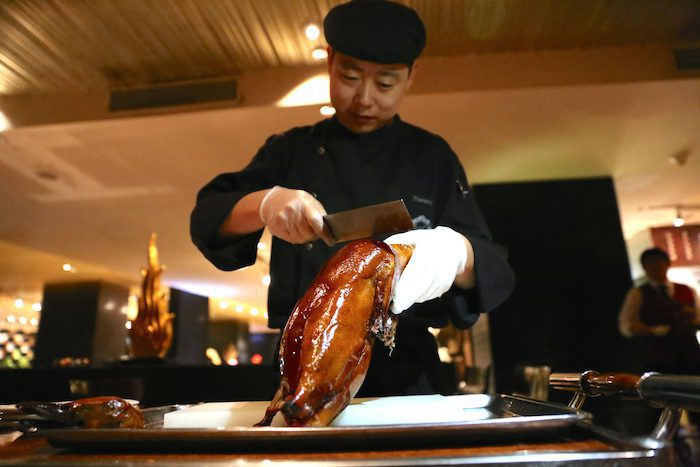
Lunar 8 in the Fairmont Beijing is the perfect example of a restaurant that has something for everyone. Sometimes it’s hard for foreigners to navigate the seemingly endless culinary landscape of a major Asian city like Beijing. This is why I think Lunar 8 makes for a great lunch or dinner spot – it has a little bit of everything and it’s all delicious.
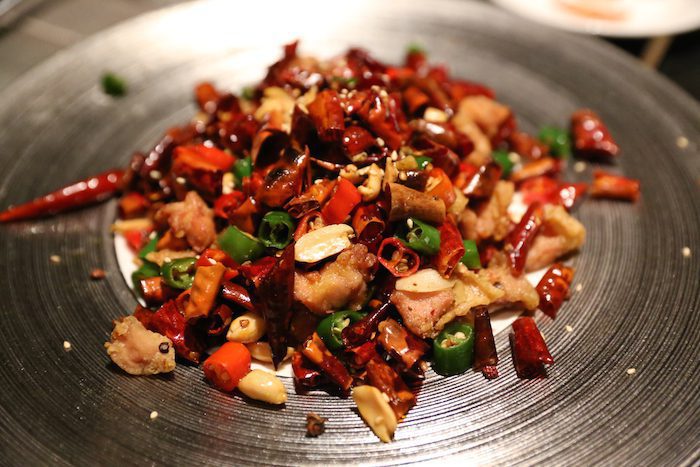
For lunch you can choose from the buffet (11:30 am – 2 pm Monday through Friday) or the a la carte menu (11:30 am – 2 pm daily). For lunch I highly recommend the steamed Cantonese Dim Sum that has steamed dumplings and buns, and the Beijing roasted duck that is carved table side for dinner.

The prices are reasonable for this level of service and food quality. Dining at Lunar 8 was a pleasant break from the noisy local restaurants near the city center. Prior reservations are suggested.

The Drum and Bell Towers lie at the north end of the Beijing-south axis line in the city’s Dongcheng Distict. What makes them remarkable is the fact they are still standing. The Drum Tower (Gulou) was built in 1272 under the rule of Kublai Khan. In 1420 the Bell Tower (Zhonglou) was erected under the reign of the Yongle Emperor of the Ming Dynasty.
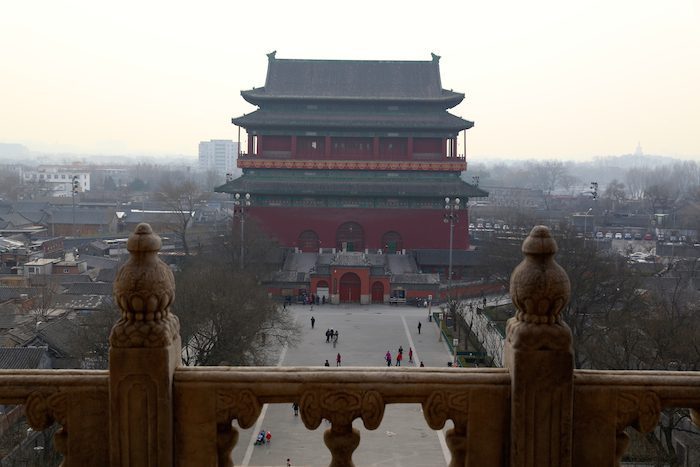
Both towers were eventually reconstructed and became accessible to the public in the 1980s. The Bell Tower has two floors and contains a 23-foot-tall copper bell that weighs 63 tons! The bell’s nickname is “the King Bell” because of its sheer size. It was struck at two-hour intervals starting at 7 pm until 5 am.
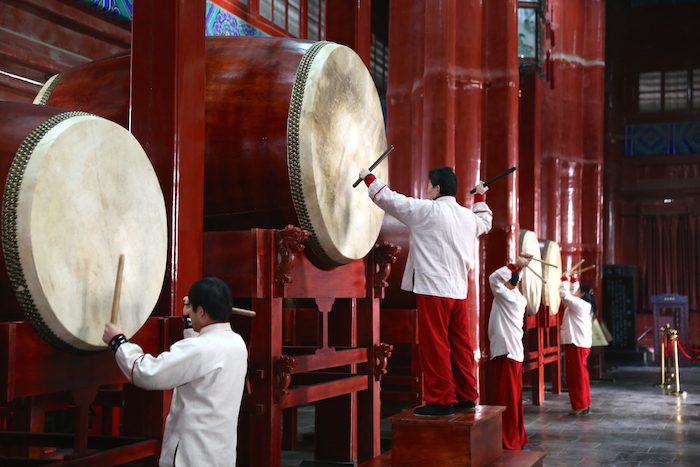
One hundred meters south stands the Drum Tower. This two-story wooden building features a multi-eaved construction, red exterior walls, and a yellow roof. Like the Bell Tower, the drums inside were sounded at two-hour intervals every evening. These days, visitors can go up to the top of the Drum Tower to watch a 20-minute performance at 9:30 am, 10:30 am, 11:30 am, 1:30 pm, 2:30 pm, 3:30 pm, and 4:30 pm. Admission to both towers (Through Ticket) is ¥30.
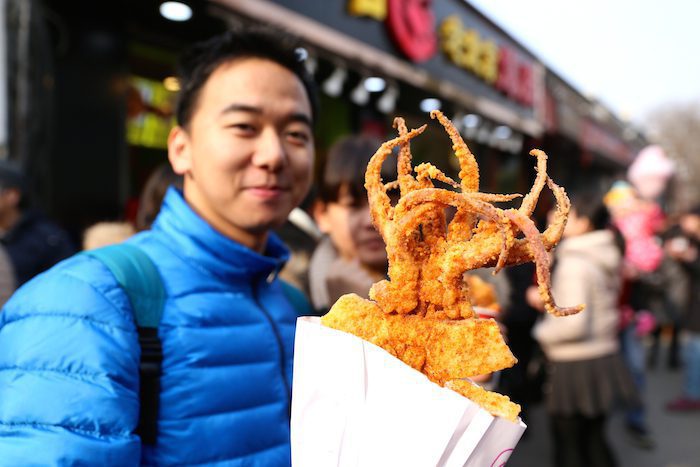
A 15-minute walk south of the Bell and Drum Towers will bring you to Nanluoguxiang, an ancient part of Beijing that is known for its hutong, or narrow street.

After the founding of the People’s Republic of China in 1949, traditional hutongs like this were torn down and replaced by wider streets, but some were spared due to public pressure about preserving Beijing’s traditional architecture. Nanluoguxiang is one such hutong that was thankfully left intact. It runs north from Guloudong Street south to Di’anmen Street and has 8 side streets on each side of the main lane.
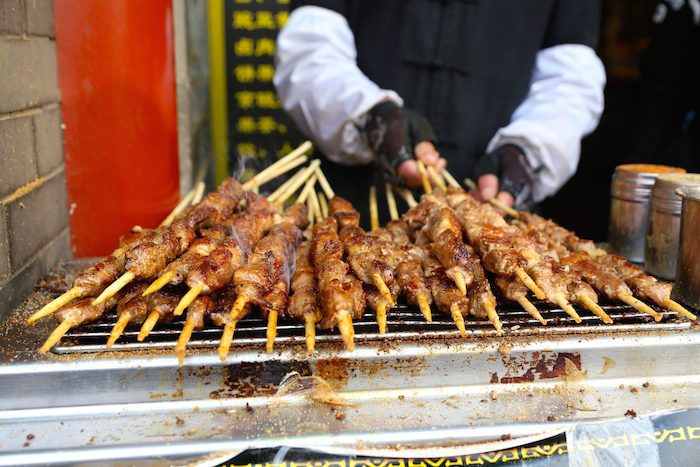
Visitors come to browse the shops, galleries, cafés, and street food vendors of this trendy neighborhood. I came to try the street snacks, but you could just as easily take your pick from the many modern and quirky restaurants. Once you’ve refueled, take stroll along nearby Qianhai Lake or walk to the Yonghe Temple (also known as the ‘Lama Temple’ or ‘Yonghe Lamasery’) to see its Tibetan-style architecture, bronze statues, and gorgeous wood carvings.
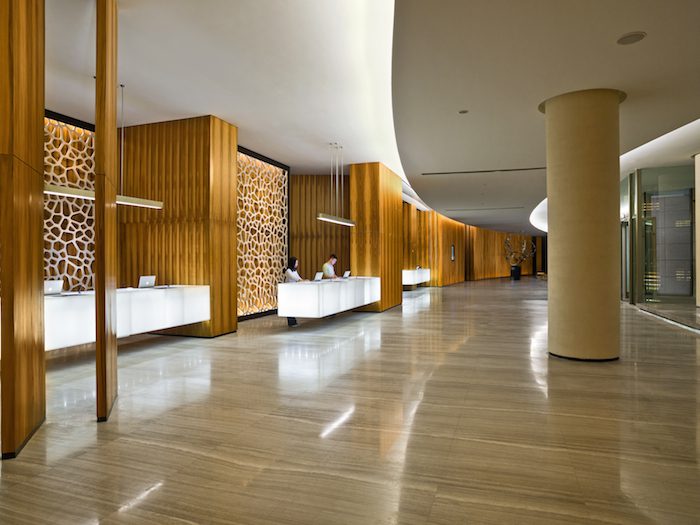
Situated in the INDIGO mall in Beijing’s Chaoyang District, the EAST Beijing has all the conveniences you’d expect from a modern business hotel and all the amenities you’d get from a boutique hotel.
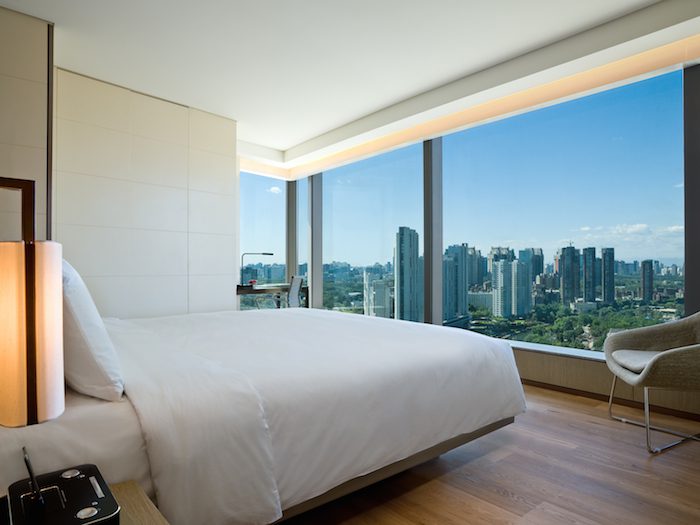
EAST Beijing is a gorgeous property with 346 rooms, 23 suites, 2 restaurants, state-of-the-art fitness center, whiskey bar, cocktail lounge, event spaces, and world-class conveniences such as rain showers, 24-hour room service, complimentary Wi-Fi, international electrical sockets, and luxury down bedding. But seriously, it offers way more than this I just didn’t want to ramble.

Guests can choose from 5 generously sized room types ranging in size from 320 to 750 square feet. The property, which is just 15 minutes from the airport, is well connected to public transit (Jiangtai Station on subway Line 14) and car (Juinxianqao Road). My experience at the EAST Beijing was wonderful – all most people want to do after a grueling flight(s) to China is to eat and sleep well.
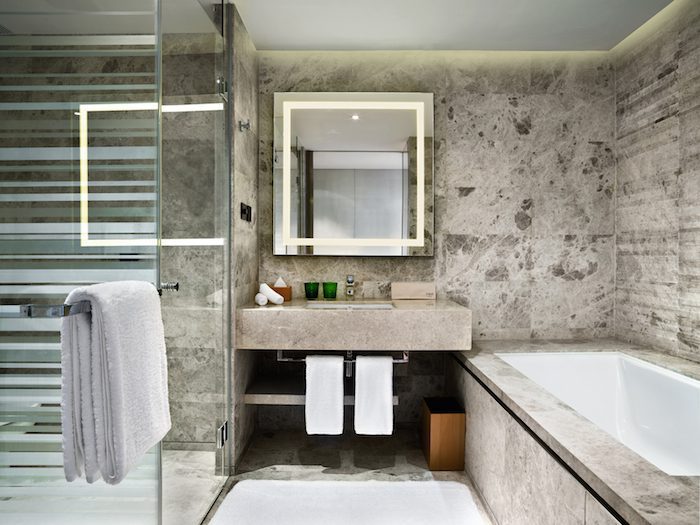
From the staff to the super comfy bed, my stay at EAST Beijing was five-star. At the concierge desk I received great tips and directions to all of the city’s major sites and how to get there. Also, the attached INDIGO mall was very convenient for picking up some extra socks for my business meetings. Overall, I highly recommend!
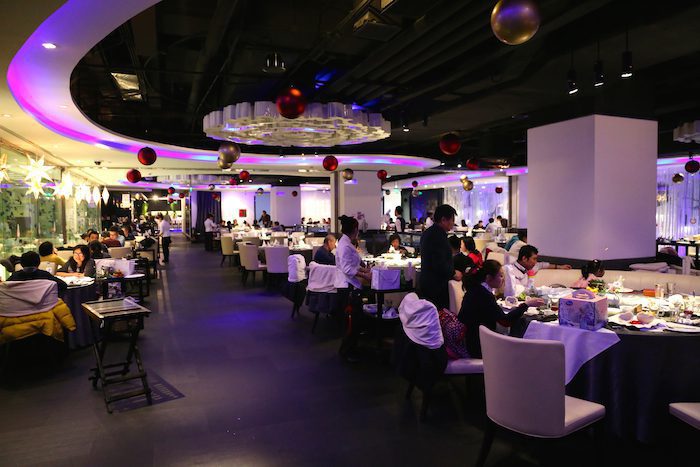
Consistently voted as the best Peking duck in Beijing, I couldn’t skip out on trying roast duck at Da Dong. The restaurant has a stellar reputation for its crispy-on-the-outside-tender-on-the-inside Peking duck. It’s also famous for only serving super-lean ducks that are less fatty than in most places.
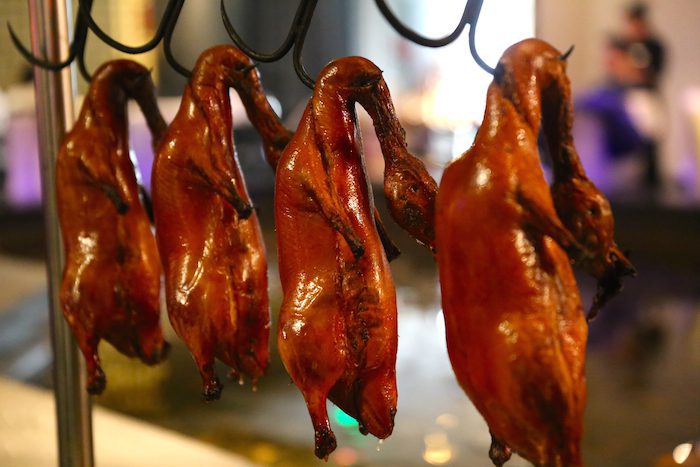
The menu itself features over 200 items – from the classic Peking duck, to vegetable sides, soups, noodle dishes – many served with dramatic dry ice presentations. Though they sounded tempting, I came for one reason and that was to try their infamous duck. So that’s exactly what I did.

Da Dong brings out the whole roasted duck to your table before carving it and serving it in thin crepes. There is an array of sweet and savory dipping sauces to try with your succulent duck meat. Overall, I have to say that Da Dong serves an impressively tasty roast duck with caramelized skin and overall my meal was outstanding. A duck that serves 2-3 people will set you back ¥198 (approximately $30 USD), so a larger table will probably need a minimum of two ducks and a couple of side dishes to feed everyone. Da Dong also has a good selection of Chinese and international wines. Reservations are highly recommended.
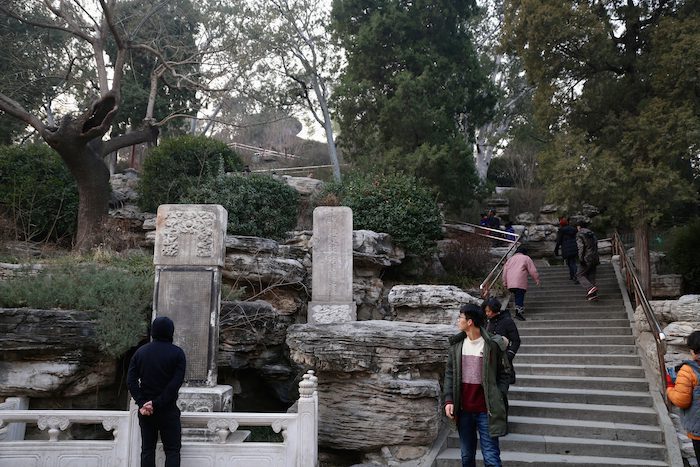
Jingshan Park is a beautiful landscaped public garden located across the street from the north gate of the Forbidden City. Originally created in the 13th century under the reign of the Yuan Dynasty, Jingshan Park served as a private imperial garden for nearly 700 years. In 1928 it was opened to the public and has been maintained quite well since then.

From the highest summit of Jingshan Park (which also happens to be the highest point in Beijing) you will get a bird’s eye view over the Forbidden City. There are five lookout points throughout the park, each featuring a pavilion. The Wanchun Pavilion is the one that offers sprawling views over the Forbidden City and central Beijing. Below is a photo of the moat surrounding the Forbidden City, which used to be the only barrier between Jingshan Park and the Forbidden City. Every time the imperial family wanted to take a stroll in the park, they had to cross the moat. It was particularly beautiful when I passed by one afternoon so here it is.
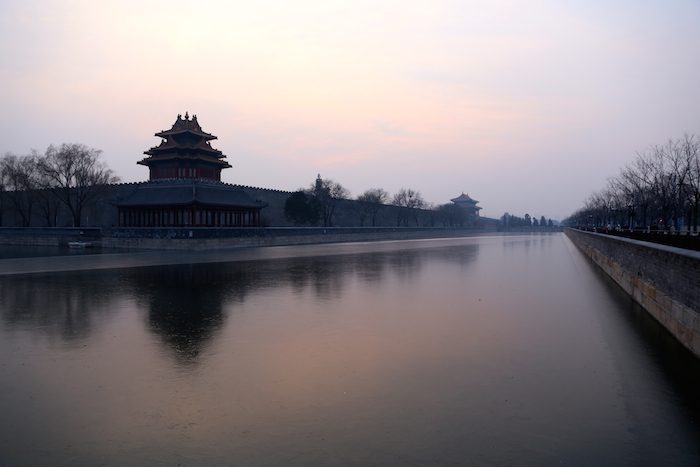
Jingshan Park is open 6:30 am – 8 pm. Admission is ¥2.

Beijing is a skyscraper city, which is why I had to indulge in a drink at Atmosphere, the highest bar in the city. Situated on the 80th floor of the Shangri-La China World Trade Centre (in the World Summit Wing), the vibe of Atmosphere echoes the sophistication and luxury that the property is known for.
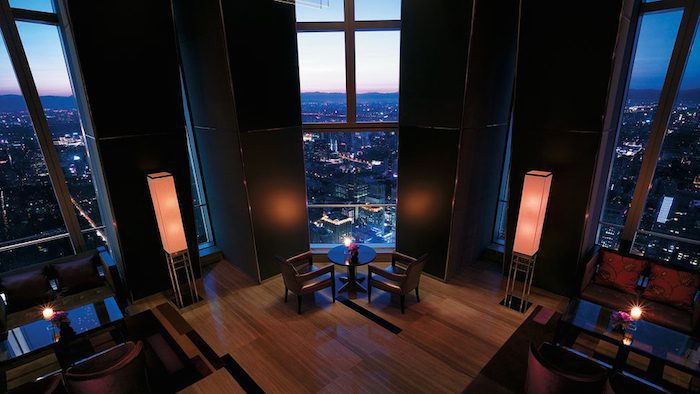
Atmosphere offers unparalleled views over the Beijing cityscape and the rare opportunity to unwind in one of the most prestigious bars in Asia. Choose from a menu of over 300 cocktails. A drink will set you back about $15 USD (plus a 15% service charge), a price that many jetsetters are willing to pay for a view of a lifetime and endless photos for your Instagram feed.

Please note – if the smog is particular dense that day, you may want to choose a different day to go to Atmosphere since visibility will be limited.

And there you have my top 15 things to do in Beijing – a city that’s hectic, pleasant, annoying, ancient, contemporary, grimy, simple, complicated, and enormous all wrapped into one! It’s a place unlike any other and a destination that you can visit over and over without even scratching the surface.
Here are 5 amazing tours I recommend in Beijing:
Special thanks to XShot. Above is a picture I got using my XShot Pro at my third world wonder – the Great Wall!
Let us know your thoughts! If you have tips or recommendations of things to do in Beijing, leave us a comment below!